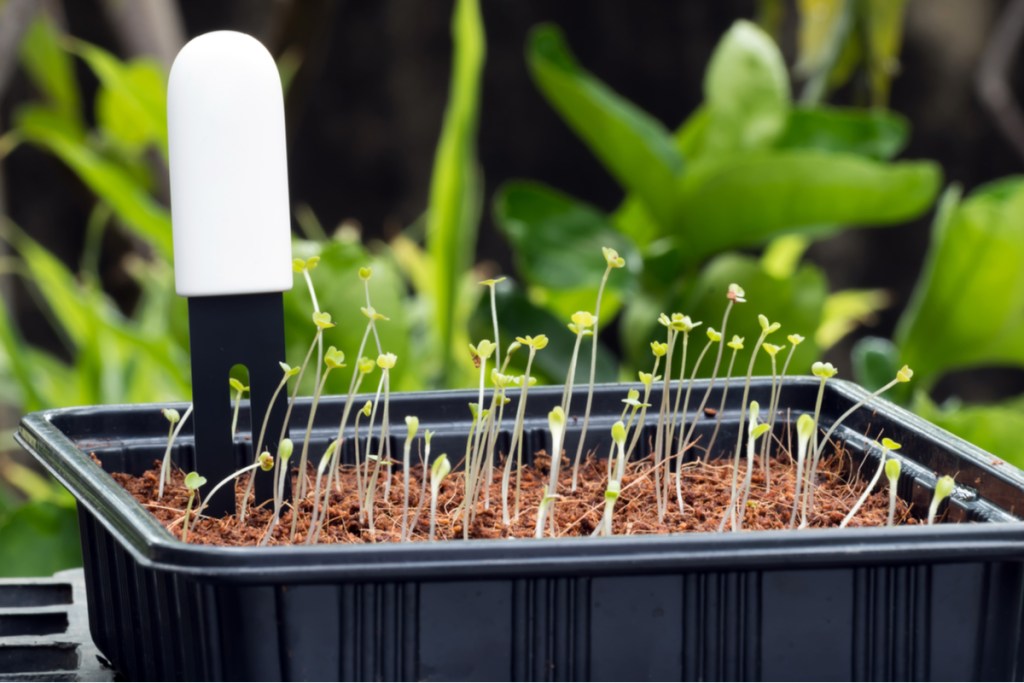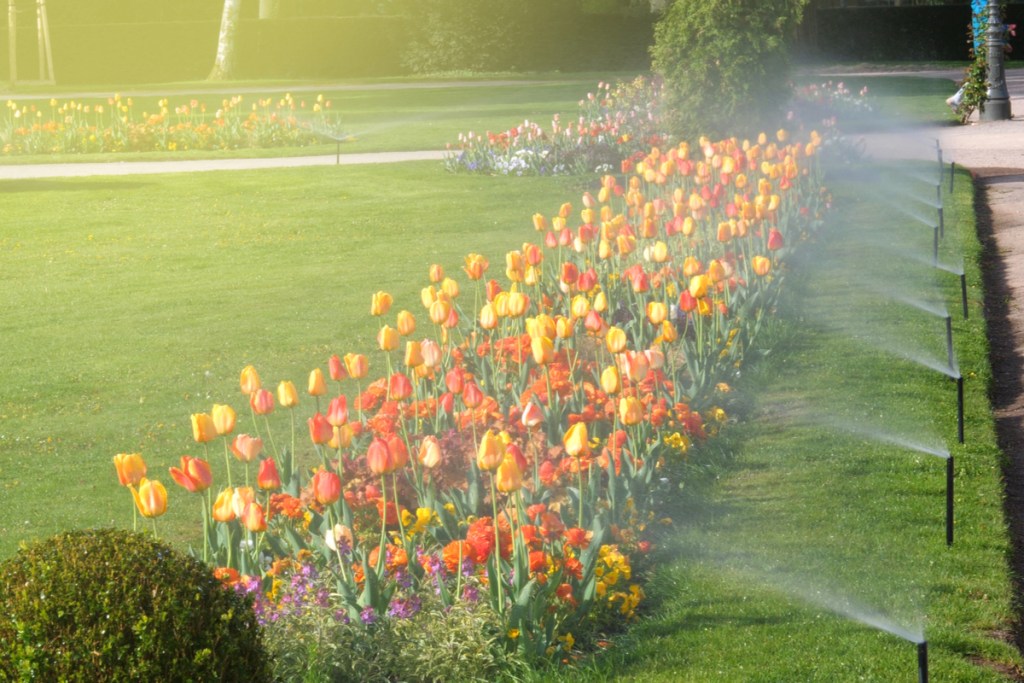It’s the 21st century and everywhere we look, there are “smart” tools. Smart phones, smart homes, smart cars—think of almost anything, and there’s probably a smart version. And that goes for gardening, too! Whether it’s indoors or outdoors, there’s technology available to help level up your gardening game and provide more informed care to your plants.

What is smart gardening?
Usually, smart gardening is referenced when talking about small, indoor units that alert you through apps on whether or not your plant is getting everything it needs. These smaller systems often manage their own lighting, and they’re ideal for growing herbs and vegetables; however, there are devices you can get to help enhance and optimize your outdoor gardens as well.
Although the same type of “smart garden” isn’t available for outdoor gardens (unless you have a greenhouse you can outfit with all the smart devices), there are still devices you can incorporate to help you keep better track of the needs of your plants. It goes beyond apps that monitor water and levels, and at times even means using a smart lawn mower when things get overwhelming. But like everything else in life, smart gardening isn’t right for everyone. It’s important to look into what each device does and how it can fit in with your gardening routine before diving head first into the smart gardening space.
Pros: More uniformed care for the average gardener; ability to monitor plants when not at home; can make care easier if you know how to use the devices
Cons: Reliance on technology to function properly; doesn’t account for weather shifts; can make care more difficult if you struggle learning how to operate new things
What to look out for when choosing devices
The most important thing you can do when looking at smart gardening devices is stay within the realm of what you need and what your budget is. There are plenty of tempting options available that are almost always marketed as “if you don’t buy this, you aren’t doing gardening right.” But that’s never the case. Everyone gardens differently, and some people have more use for a personal weather station than others.
Be mindful of what you need, and try not to buy anything without knowing how you’ll use it. We’d hate for anyone to get a smart device thinking it will make them the perfect gardener, only to find out it’s much more complex than they thought and they were better off without it. Buy what’s most important first. If you’ve got a good watering routine down that keeps your plants happy, but you’re not great at identifying pest and disease problems, try starting with a gardening app instead of an automatic irrigation system. When you’re ready, you can move on from there.
Smart gardening devices to up your gardening game
It’s true that indoor smart garden technology is much more easily adaptable, especially because not everyone will have space for outdoor smart garden items. But there are still some cool ones you can look into, from identification apps to home weather stations that help you monitor outdoor conditions from day to day.
Gardening apps
There are a wide variety of gardening apps available, a lot of which are free with some services that you can pay for that help with things like plant identification, garden design, and disease or pest problems. One of the popular ones is GardenTags, which is available for iOS and Google Play. On this app, you can show off your plants and lawns, and experience a network built just for gardeners.
Unique features: Network build for gardeners to share knowledge and plants; has a premium service with video tutorials and task reminders
Price: Base app is free with premium subscription cost of $25
Smart soil sensor
Smart soil sensors help with indoor and outdoor gardening, sending information via Bluetooth directly to your smartphone. They help monitors things like humidity, light and nutrient levels, and temperature, letting you know how the soil is being affected so that you can make any necessary adjustments. The soil sensor from Wanfei is a great place to start if you’re looking for houseplant or outdoor container monitoring.
Unique features: Flower care app with a database of over 6,000 plants to provide information and identification
Price: $27 for the product; free app for iOS and Android

Automatic watering system and sprinklers
An automatic watering system with sprinklers is great for the gardener who loves to travel! You can set them up on a schedule to care for your plants and monitor and make changes to them from your phone or computer, which is perfect when you’re on vacation. Automatic watering systems often save water, too, since they know just how much to water. One like the Rachio 3 even adjusts it’s schedule automatically based on local weather, so you won’t have to worry too much about keeping tabs on it while you’re away.
Unique features: Adapts to different types of soils in areas of your garden, as well as how much shade is in a particular spot
Price: $230
Personal weather station
Having a personal weather station in your home is especially useful in combination with an automatic watering system. It monitors rain, wind, and temperature, and one like Netatmo’s weather station sends real-time notifications with updates on the outdoor (and indoor!) conditions. You can use this alongside a water system that monitors local weather to make sure that the changes needing to be made to watering schedules are made properly while you’re away, offering a little more control over an automated device.
Unique features: Has indoor and outdoor sensors so you know what’s happening in both environments; compatible with Amazon Alexa and Apple HomeKit
Price: $150
Smart gardening devices can meet a variety of needs. You don’t need to have them all, but one or two may significantly change the way you garden and help you maintain control over your plants when weather is unpredictable.
Editors' Recommendations
- 6 tips you should keep in mind when building your own drought-tolerant garden
- Climate zone 3 plants that will thrive in cool temperatures
- Trying to beat the cold? Here are our favorite frost-resistant plants for any climate
- 4 November garden plants you should consider growing
- Are mulched leaves good for grass? Here’s how to mulch a lawn full of leaves this fall



